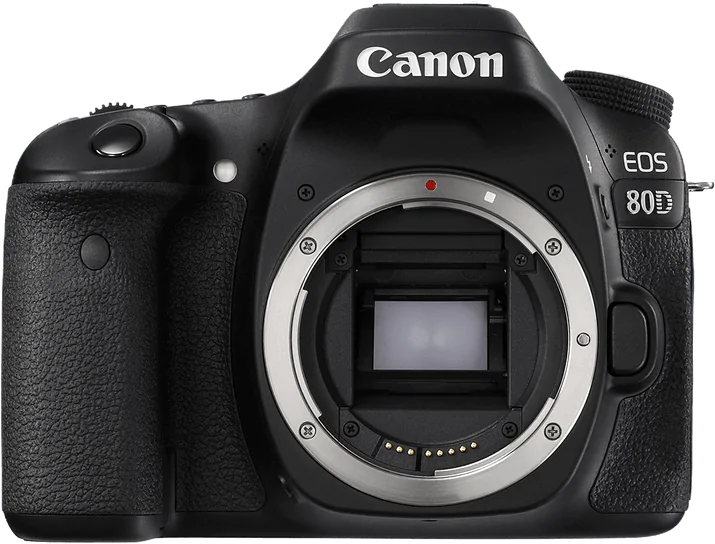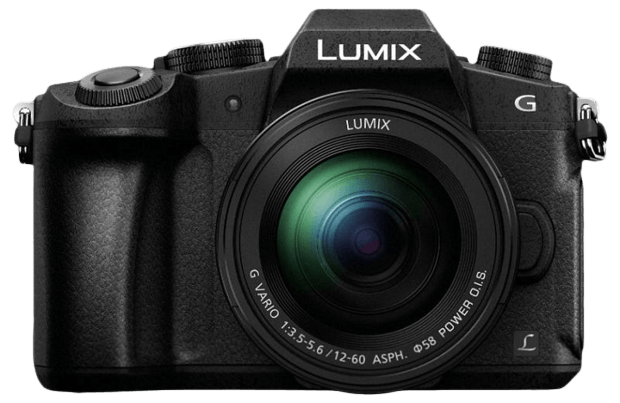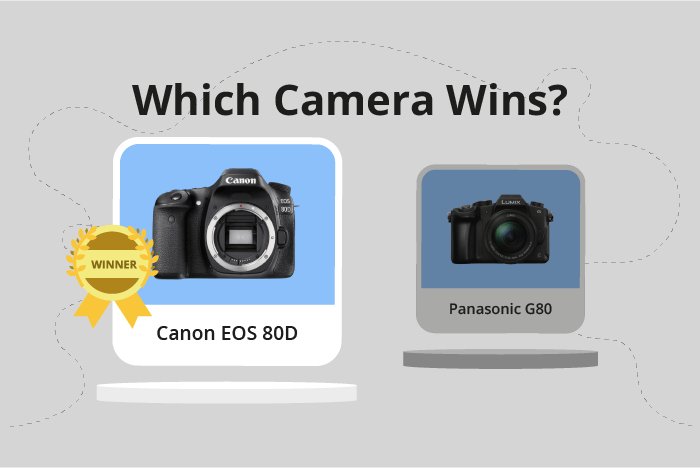Canon EOS 80D vs Panasonic Lumix DMC-G80 Comparison
Canon EOS 80D

Panasonic Lumix DMC-G80

The Canon EOS 80D outperforms the Panasonic Lumix DMC-G80 with a score of 64/100 compared to 58/100. Both cameras were released in 2016, with the 80D being a DSLR and the G80 being a mirrorless camera. They share similar announcement dates, with the 80D announced on 02/18/2016 and the G80 on 09/19/2016.
The Canon EOS 80D excels with a larger camera size (139 x 105 x 79mm) and heavier weight (730g), which may provide better stability and grip. However, the Panasonic Lumix DMC-G80 has a more compact design (128 x 89 x 74mm) and lighter weight (505g), making it more portable and convenient for travel.
The 80D has a higher launch price of $1200, while the G80 is more affordable at $900. Despite the price difference, the Canon EOS 80D’s higher score indicates it offers better features and performance. The Panasonic Lumix DMC-G80, on the other hand, provides a more budget-friendly option with decent performance.
Canon EOS 80D vs Panasonic Lumix DMC-G80 Overview and Optics
The Canon EOS 80D outperforms the Panasonic Lumix DMC-G80 in optics with a score of 63/100, compared to the G80’s 57/100. Both cameras share common specifications, such as CMOS sensor type and similar shooting speeds (the 80D has 7 fps, while the G80 has 9 fps). However, there are differences that make the 80D superior in some aspects.
The 80D boasts 24.2 megapixels, providing higher resolution images than the G80’s 16 megapixels. Additionally, the 80D has a larger APS-C sensor size and a higher DXOMARK score of 79 for its sensor, which contributes to better image quality. The Canon EF-S lens mount offers a wide range of compatible lenses, allowing for more versatility in shooting situations.
On the other hand, the G80 has some advantages over the 80D. Its Micro Four Thirds sensor size and Micro 4/3 lens mount make it more compact and lightweight. The G80 also features image stabilization, which helps reduce camera shake during handheld shooting, a feature the 80D lacks. The 4:3 aspect ratio of the G80 offers a more square image, which can be preferable for certain compositions.
Taking these factors into consideration, the Canon EOS 80D is the stronger choice for those seeking higher resolution and better image quality, as well as a wider range of lens options. However, the Panasonic Lumix DMC-G80 may be more suitable for photographers who prioritize compactness, image stabilization, and a different aspect ratio. Each camera has its unique strengths, and the choice ultimately depends on the specific needs and preferences of the photographer.
Canon EOS 80D vs Panasonic Lumix DMC-G80 Video Performance
The Canon EOS 80D emerges as the winner in video capabilities with a video score of 70/100, while the Panasonic Lumix DMC-G80 trails behind with a score of 56/100. Both cameras share some common specifications, such as having built-in time-lapse functionality for creative video effects.
The Canon EOS 80D outperforms the Panasonic Lumix DMC-G80 in terms of video frame rate, offering a maximum of 60fps compared to the G80’s 30fps. This difference allows the EOS 80D to capture smoother motion in videos, making it a better choice for action and sports videography.
On the other hand, the Panasonic Lumix DMC-G80 boasts a higher maximum video resolution of 4K (3840 x 2160), compared to the EOS 80D’s Full HD (1920 x 1080) resolution. This means the G80 can produce videos with more detail and clarity. However, this advantage is limited by its lower frame rate, which may result in less fluid motion in videos.
In terms of video capabilities, the Canon EOS 80D has the edge over the Panasonic Lumix DMC-G80 due to its higher video score and superior frame rate. The EOS 80D is more suitable for capturing fast-moving subjects, while the G80’s higher resolution may be more appealing for those seeking greater detail in their videos. Despite the G80’s higher resolution, its lower frame rate hinders its overall video performance, making the Canon EOS 80D a better choice for most video applications.
Canon EOS 80D vs Panasonic Lumix DMC-G80 Features and Benefits
The Canon EOS 80D and the Panasonic Lumix DMC-G80 both have a feature score of 70 out of 100 points. These cameras share many similarities in their specifications. Both have a screen size of 3 inches and a screen resolution of 1,040,000 dots. They also have touchscreens, flip screens, Wi-Fi, and neither of them has GPS or Bluetooth capabilities.
Despite having the same feature score, the Canon EOS 80D has some advantages over the Panasonic Lumix DMC-G80. The Canon EOS 80D is better in terms of autofocus system, offering a 45-point all cross-type AF system, which is more advanced than the Panasonic Lumix DMC-G80’s 49-point contrast-detect AF system. This means the Canon EOS 80D can focus more accurately and quickly in various shooting conditions.
On the other hand, the Panasonic Lumix DMC-G80 has some aspects where it outperforms the Canon EOS 80D. The G80 offers in-body image stabilization, which the Canon EOS 80D does not have. This feature makes it easier to capture sharp images in low light conditions or when using longer focal lengths without the need for a tripod.
Both cameras have their strengths and weaknesses, making them suitable for different purposes and preferences. The Canon EOS 80D’s better autofocus system makes it a great choice for photographers who prioritize fast and accurate focusing, while the Panasonic Lumix DMC-G80’s in-body image stabilization provides an advantage for those who often shoot in challenging conditions or with longer lenses. Ultimately, the choice between these two cameras will depend on the specific needs and requirements of the user.
Canon EOS 80D vs Panasonic Lumix DMC-G80 Storage and Battery
The Canon EOS 80D outperforms the Panasonic Lumix DMC-G80 in storage and battery with a score of 43/100 compared to the latter’s 21/100. Both cameras share similarities in storage, such as having only one memory card slot and accepting SD, SDHC, and SDXC memory cards. However, the EOS 80D has an advantage with UHS-I compatibility, which allows for faster transfer speeds.
The most significant difference between the two cameras lies in their battery life. The Canon EOS 80D’s LP-E6N battery delivers an impressive 960 shots, nearly triple the 330 shots provided by the Panasonic Lumix DMC-G80’s lithium-ion battery. Neither camera offers USB charging capabilities.
While the Panasonic Lumix DMC-G80 may fall short in storage and battery performance, it still offers decent features for photographers who do not require extended battery life or faster transfer speeds. Despite this, the Canon EOS 80D’s superior battery life and storage capabilities make it the clear winner in this comparison.
Alternatives to the Canon EOS 80D and Panasonic Lumix DMC-G80
Are you still undecided about which camera is right for you? Have a look at these popular comparisons that feature the Canon EOS 80D or the Panasonic Lumix DMC-G80:

